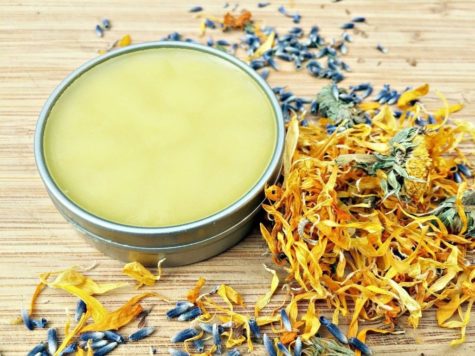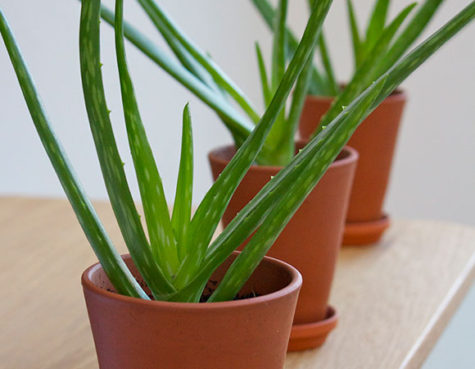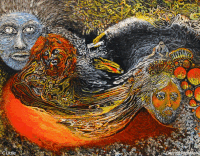Burns
How to Make a Healing Salve
The best way to make a salve is to allow your herbs to solar infuse in your choice of carrier oil anywhere between 4 and 6 weeks. Fill (not stuff) a jar with herbs and pour the carrier oil over top.
- Be sure to cover all plant matter and poke out any trapped air bubbles.
- Be sure to use plant matter that has NO moisture on it at all!! (No rain, dew, etc.)
Cover the jar and let sit in a room that gets sunlight but do not place in direct sunlight. It’s a good idea to date the jar so you don’t forget when you started it.
A faster method is to place your herbs and the carrier oil into a Pyrex container over top of a large pot that is about ¼ full of water. Once the water is boiling turn the stove down to a simmer and allow the herb/oil mixture to infuse for about 40 minutes.
DO NOT SPLASH WATER INTO THE HERB/OIL INFUSION!
After either of the above methods, place three layers of cheesecloth over a large bowl. Pour the infused oil over the cheesecloth to strain and be sure to keep herbs out of the oil. Once drained ~ with your clean hands ~ squeeze out remaining oil. After measuring out what you will use to make salve store the remaining oil and again, be sure to date it.
Measure out 114 grams of infused oil (or 4 oz which is ½ cup) and set aside.
Weigh 8 grams of beeswax on a scale. Shave or cut into small pieces your beeswax. Place in a Bain Marie and melt.
Once melted add to the oil and stir well with a clean wooden stick. Test it for hardness by taking a small amount on a spoon and tip it – the mixture should adhere to it. If it is too soft add a tiny bit more melted beeswax.
Add 4 drops of Benzoin oil as a preservative and add a few drops of essential oil for fragrance if desired. Pour mixture into jars. Cap only when cooled. Store in a dark, cool location.
NOTE:
In addition to making salves for muscle aches, skin ailments, or other health ailments, make a health-nourishing salve for your skin. When infusing oil, use vegetables that are well-known for skin health such as broccoli, spinach, bell peppers, asparagus or carrots.
From: Edible Wild Food
Aloe Vera for Burns
Aloe vera is the herb for minor burns, a fact that was confirmed most recently in the Journal of the Medical Association of Thailand. Keep a potted aloe on your kitchen sill; it requires no care beyond weekly watering. For minor burns, snip off a thick leaf and slit it open; scoop out the gel from the inner leaf and apply to the burn.
~Michael Castleman, Natural Health
Marsh Mallow Ointment
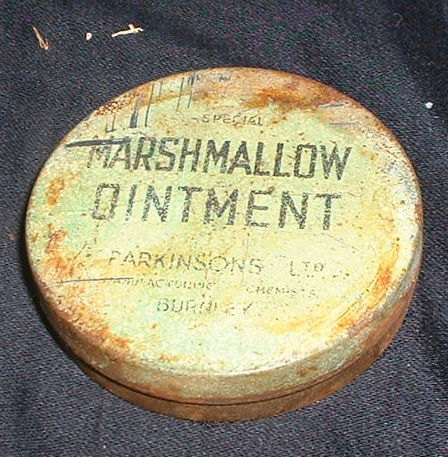 Marshmallow Ointment, one of the principal ointments used in herbal medicine, has a considerable proportion of Slippery Elm bark in its composition. It is made as follows:
Marshmallow Ointment, one of the principal ointments used in herbal medicine, has a considerable proportion of Slippery Elm bark in its composition. It is made as follows:
- 3 oz. Marshmallow leaves
- 2 oz. Slippery Elm bark powder
- 3 oz. Beeswax
- 16 oz. Lard
Boil the Marshmallow and Slippery Elm bark in 3 pints of water for 15 minutes. Express, strain and reduce the liquor to half a pint. Melt together the lard and wax by gentle heat, then add the extract while still warm, shake constantly till all are thoroughly incorporated and store in a cool place.
Use for chapped dry skin, burns and abrasions.
Source: A Modern Herbal
For information on individual herbs visit: The Encyclopedia of Herbology
A Healing Salve
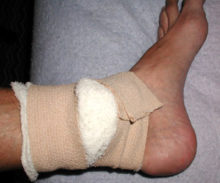 The Red Indians have long used this viscous inner bark to prepare a healing salve, and in herbal medicine a Slippery Elm bark powder is considered one of the best possible poultices for wounds, boils, ulcers, burns and all inflamed surfaces, soothing, healing and reducing pain and inflammation.
The Red Indians have long used this viscous inner bark to prepare a healing salve, and in herbal medicine a Slippery Elm bark powder is considered one of the best possible poultices for wounds, boils, ulcers, burns and all inflamed surfaces, soothing, healing and reducing pain and inflammation.
It is made as follows:
Mix the powdered bark with hot water to form the required consistency, spread smoothly upon soft cotton cloth and apply over the parts affected. It is unfailing in cases of suppurations, abscesses, wounds of all kinds, congestion, eruptions, swollen glands, etc.
In simple inflammation, it may be applied directly over the part affected; to abscesses and old wounds, it should be placed between cloths. If applied to parts of the body where there is hair, the face of the poultice should be smeared with olive oil before applying.
Source: A Modern Herbal
For information on individual herbs visit: The Encyclopedia of Herbology
Saida: Salves To Heal Up Wounds
Brenda-Lee: Egg White Cough Cure
Pat Scott: Marsh Mallow Ointment
Sharon from Cleveland, Ohio: Egg White Cough Cure
Vagabond Witch: Soapwort Shampoo
